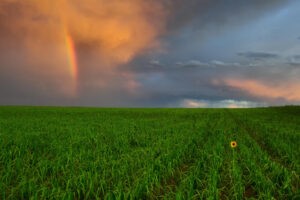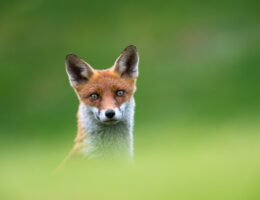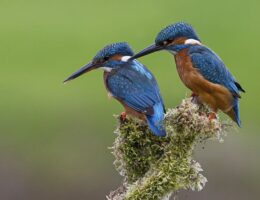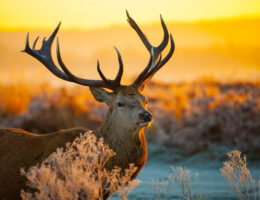IRAN ART EXHIBITION: SUBJECTS REALLY MATTERS IN LANDSCAPE PHOTOGRAPHY
Landscape photography is the art of capturing pictures of nature and the outdoors in a way that brings your viewer into the scene. From grand landscapes to intimate details, the best photos demonstrate the photographer’s own connection to nature and capture the essence of the world around them. If you want to learn everything there is to know about taking beautiful landscape pictures, this is the place to start.
Post-Processing
If you already understand the basics of landscape photography, it might be time to learn the more advanced techniques. Things like hyperfocal distance, exposing to the right, and focus stacking are not absolutely essential for learning landscape photography, but they certainly help take your pictures to the next level.
Astrophotography
You can take good landscape photos with any camera equipment, but you still need to know how to use it properly.
Panorama Photography
Composition is one of the most important parts of photography, no matter what you’re taking pictures of. However, for landscape and nature photography specifically, there are a few extra things you need to keep in mind — the natural world might not always act how you want!
Advanced Landscape Photography
One of the most challenging and rewarding types of landscape photography is astrophotography: taking pictures of the stars, moon, and Milky Way galaxy at night. Nighttime landscape photography involves very different camera settings and technique than taking pictures during the day, but the images you bring back will be worth the effort.
Beginner Landscape Photography
IRAN ART EXHIBITION: Many photographers want to know how to take beautiful, sweeping panorama photos. It’s not the most difficult side of photography, but you need to use the right technique — both in the field and when editing your images.
Equipment
After you’ve captured a beautiful photo in the field, the next step is editing it in post-processing software. Especially for landscape photography, careful post-processing is very important. You don’t want to oversaturate the colors in your image or add too much contrast, but you still want to create an interesting, beautiful result. These tips will help you get there.
We’ve all had the experience: Driving through a beautiful landscape, you stop at every scenic overlook to make photographs sure to capture the grandeur of what you see.
You get home, look at the pictures, and find them flat and boring. All the elements that enthralled you at the time are there, but not the feeling. Why?
When we look at a landscape, our eyes travel over it and selectively focus on the elements that we find appealing. Our field of vision encompasses a great deal of the scene, but our eyes and brains have the ability to ignore all except the most alluring details. Lenses and sensors or film cannot do this by themselves. They need help.
Time is the most important investment you can make in getting good landscape pictures. When you arrive in a place you’ve never visited before, spend time scouting—driving or hiking to different locations, finding different vantage points. Carry a compass to figure out where the sun will rise and set, and imagine how the place would look in different kinds of light. This can take some practice because you also have to look at where the light will not be falling. Photographing a canyon, for example, you might see that the west wall will be beautifully lit in the early morning, if the canyon is deep, however, the east wall will be in such complete shadow that your camera will be capable of rendering it only as a great black blob. Unless this is the effect you want, you’ll either have to modify your composition, shoot it later in the day, or plan to return on an overcast day when both sides will be photographable.
LANDSCAPE SUBJECTS
Flowing Water
If a river or stream flows through the landscape you are shooting, think about the character of it and how to convey that character in the image. A big, slow river looks and feels different from a fast-moving mountain stream. The water can be the center of interest in the image, or it can serve as an element in your composition—as a diagonal or other leading line, as a horizontal line, or as a shape that complements other elements in the frame.
IRAN ART EXHIBITION: Look carefully for reflections in the water. You can use some reflections to enhance the image—the colors of reflected autumn leaves, for instance—but others may just be distracting. You may have to move around a bit to include or eliminate them, or return when the sun is at a different angle. Use a polarizing filter to eliminate some of the reflection and increase contrast; rotate it until you have the effect you want.
Forests
Photographing forests presents a different set of challenges. First, think about the character of the forest you want to shoot and the feeling you want to convey in your image. Should it feel dark and brooding, or light and airy? Are there any special features that will help express how you feel about it?
As with any photograph, find a point of interest. It might be one slightly different tree trunk, a path winding through, or a splash of color on a flowering vine. Whatever it is, compose in such a way to lead the viewer to it. Look for shafts of light penetrating the canopy or one spot on the forest floor directly lit by the sun.
Whether you are shooting toward a forest or shooting from inside it, look for patterns, lines, and other compositional elements you can use. Try both wide and telephoto lenses. A wide lens looking up at the trees will make them soar; a telephoto will compress a row of trunks. Lie down and look straight up through the branches; climb a tree to look down the path.

Plains and Prairies
IRAN ART EXHIBITION: Wide-open spaces such as plains and prairies are among the hardest landscapes of all to photograph well because often they lack an obvious point of interest. In most cases, the huge scope of the scene is one of the things you’re trying to communicate. Even so, remember that viewers need something on which to focus. Look for an element peculiar to that place and use it as a point of interest that says something about the scene and imparts a sense of scale. You don’t want the viewer’s eyes to wander aimlessly around the frame, so use whatever might be available to lead him into the image—a winding road, a stream, or a fence line, for example.
Like every forest, every plain has its own personality, so hunt around until you have found an angle and composition that reflect it. What is the most important feature of this particular place? Think about the sky. Do you want a lot or a little of it? A clear blue sky might best reflect the character of one plain, a brewing storm another. Remember the rule of thirds. If the sky is important, place the horizon along the bottom third division of the frame. If it is not, put it along the upper third.
Deserts
Look for ways to show the rugged nature and the beauty of deserts. In the middle of the day, find waves caused by the heat. Using a long lens to compress them, you’ll get dramatic shots that really say “hot.” Deserts are also great places for pictures of stars. There is no humidity, and usually no terrestrial lights to interfere, so stars seem more numerous and are unusually brilliant. Watch the way the color of the sand changes throughout the day with the angle of the sun. Think about ways to capture the characteristics of the desert. A wide shot might best portray one desert, while a close-up of one plant struggling to survive on the side of a dune might best represent another.
IRAN ART EXHIBITION: Think about including the sun in your photograph—it’s one sure way to say hot and harsh. But shooting the sun is tricky. On a clear day, the sun is so bright that your camera’s meter will tend to underexpose everything else in the frame. Shoot in manual mode, or take a reading without the sun in frame, depressing the shutter button halfway to hold the exposure, then reframe before you shoot. If you’re shooting film, bracket a lot to make sure of getting the exposure you want. With a digital camera, check the images as you shoot. Wide-angle lenses tend to work best because the blown-out sun takes up less of the image, but they are susceptible to lens flare. The advantage of SLRs is that you can see the flare when you frame the image.
Seacoasts
Consider these different scenes: a tranquil tropic isle with turquoise water lapping at a white, sandy beach; storm waves pounding a rocky New England shore; a densely packed vacation beach. What kind of shore are you photographing, and how can you best convey it? What time of day, what kind of weather, and what season is most appropriate for showing its character? These are the kinds of questions to ask yourself while scouting for the right vantage point and composition before shooting. Every shoreline is different in some way. Show the difference in your images.
Once you have thought about the character of the shore, look for elements you can use to reinforce the feeling you’re after. Palm trees make a good frame for a tropical beach; a spray of water shooting over rocks adds drama to a rugged coastal scene. As in the desert, be careful about sand. If it’s windy, be sure to protect your camera and lenses from blowing sand. Don’t open the camera back unless you are in an area that is well sheltered.
Mountains
IRAN ART EXHIBITION: Are the mountains you’re shooting rugged or worn, threatening or enchanting? What feeling do you get from them? Look for elements that will reinforce your feeling and convey it to the viewer. What composition, angle, light, and weather seem most appropriate? Look for the telling details that reflect the spirit of the mountains, too.






